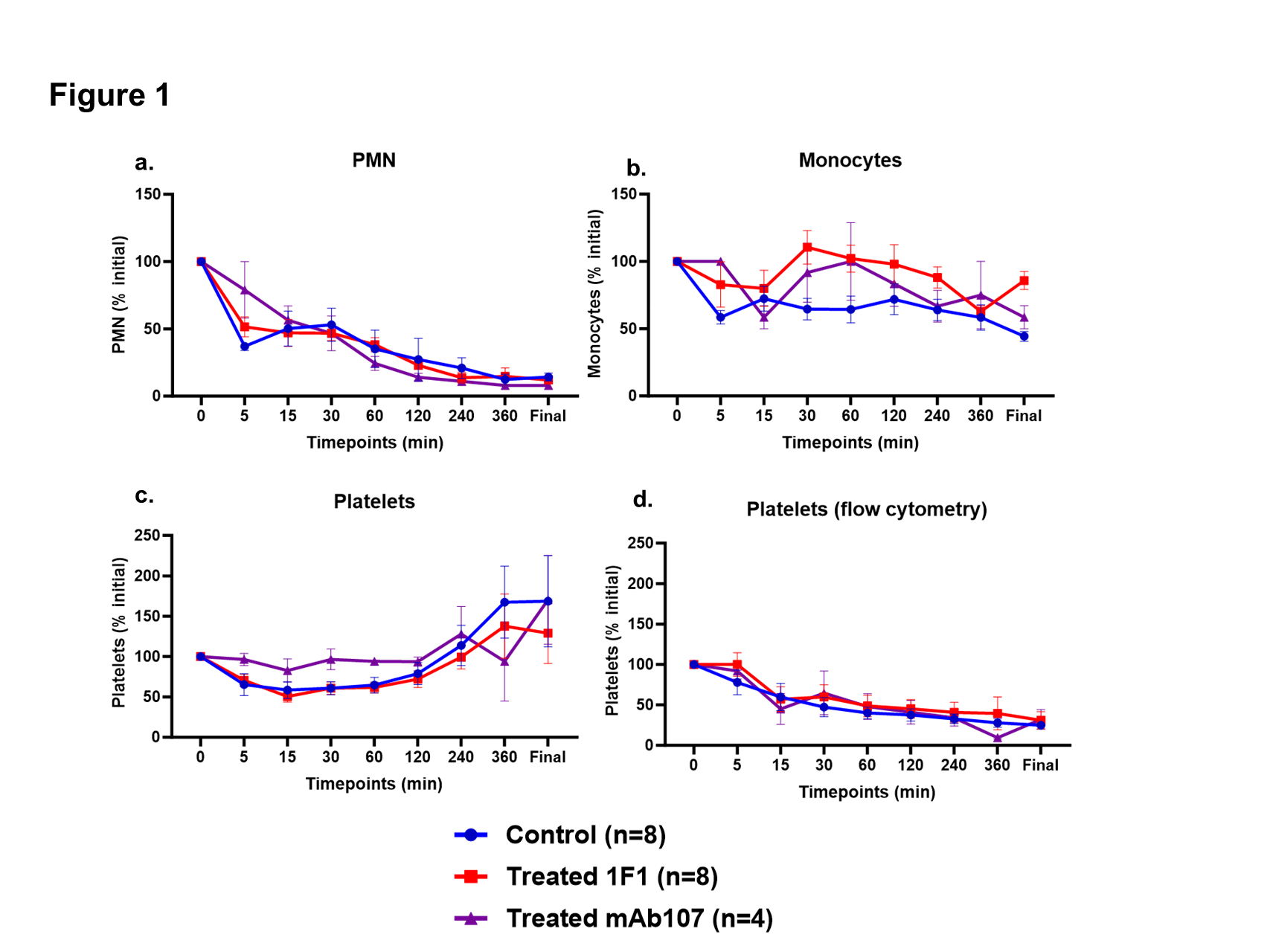Insights from platelet and leukocyte sequestration in pig lung perfusion with human blood: role of selectins, porcine sialoadhesin, and CD11b/CD18 Integrin
Zahra Habibabady1, Sara De Taeye1, Amir Sanatkar1, Victoria Diaz1, Anthony Calhoun1, Madelyn Ma1, Ikechukwu Ileka1, Burdorf Lars2, Richard N Pierson III1.
1Center for Transplantation Sciences, Mass General Brigham Hospital and Harvard Medical School, Boston, MA, United States; 2Revivicor, Inc, Blacksburg, VA, United States
Background: Xenogeneic lung injury is characterized by the rapid sequestration of platelets and leukocytes. Previous data shows that selectins and integrins facilitate leukocyte rolling, arrest, and platelet adhesion to pig endothelium in both Bioflux and lung perfusion ex vivo pig-to-human models. The monoclonal antibody 1F1, which blocks porcine sialoadhesin, has been found to reduce rosette formation significantly. This study aims to determine whether a combination of P- and E-selectin inhibition along with 1F1 and augmented CD11b/CD18 integrin inhibition using mAb107, an anti CD11b/CD18 mAb which is specific for the activated configuration of CD11b, can prevent these phenomena and improve lung function in an ex vivo lung perfusion model.
Methods: Twenty Lungs from GalKO background pigswith or without β4Gal and Neu5Gc knockouts and containing human transgenes CD46, CD55, TBM, EPCR, CD47, HO-1 (n=16) perfused with fresh heparinized human blood; all pigs were pre-treated with DDAVP to deplete endothelial vWF. Blood perfusate was pretreated with thromboxane synthase inhibitor 1-BIA and 2 histamine receptor blockers (n=8), the “treated” lungs received additional rPSGL1.Fc, E-selectin antagonist GMI 1687, Galectin 3 and 1F1 mAb, with (n=4) or without (n=8) mAb107; αGPIb Fab was added in some experiments. Formed blood element sequestration was measured by hemocytometer and flow cytometry.
Results: Combined P- and E-selectin inhibition delayed but did not prevent neutrophil and platelet sequestration, as previously reported; neutrophil (PMN), and platelet sequestration (figure 1), lung survival, and terminal tissue wet/dry ratio were not further reduced with added sialoadhesin and mAb107 integrin blockade, although 1F1 appeared to affect monocyte counts, and platelet-sized RBC fragments by flow cytometry, which was less during the final timepoints (figure 2). Analysis of histology of lung tissues, complement and coagulation pathway activation, thromboxane, and histamine levels are in progress.


Conclusion: Erythrocyte sequestration during ex vivo xenoperfusion was attenuated by 1F1 mAb. Blocking the activated configuration of CD11b, in the context of P- and E- selectin along with inhibition of sialoadhesin and CD11b/18 integrin binding, did not prevent the sequestration of platelets and PMNs or reduce lung injury during ex vivo perfusion with human blood of pig lungs multiply engineered to address known xeno injury mechanisms. We conclude that activated CD11b does not appear to attenuate formed blood element sequestration beyond that observed with pan-selectin/ integrin/ Galectin-3 / sialoadhesin blockade. These findings raise the question of whether other adhesion molecules, such as ICAM-1 and VCAM-1, or other lectins and inhibitors such as galectins-1, -8 and -9 play a role in this process.
